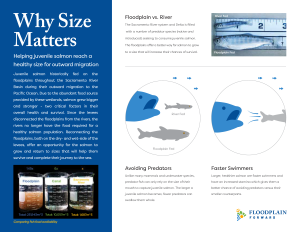By David Guy
As part of the Floodplain Forward Coalition, there are significant efforts to re-imagine and better use our system of flood control levees and bypasses, the farmlands in the historic floodplain, and oxbows and other features within the river to benefit salmon, birds, and agriculture while ensuring the flood protection system functions well when needed. By reactivating Sacramento River floodplains and allowing bypasses to connect to the river more frequently and for longer durations, the Sacramento Valley can better mimic historical flood patterns and reintegrate natural wetland productivity into the river ecosystem needed to promote salmon recovery while simultaneously improving flood protection and enhancing water security.
To promote salmon recovery, the primary objective is to help juvenile salmon reach a healthy size for outward migration and survival. Juvenile salmon historically fed on the floodplains throughout the Sacramento Valley during their outward migration to the Pacific Ocean. Due to the abundant food source provided by these wetlands, salmon grew bigger and stronger–two critical factors in their overall health and survival. Since the levees disconnected the floodplains from the rivers, the rivers no longer have the food required for a healthy salmon population. Reconnecting the floodplains, both on the dry– and wet-side of the levees, offer an opportunity for the salmon to grow and return to sizes that will help them survive and complete their journey to the sea.
The graphics below show the importance of size to salmon survival and why the floodplains are so important to the future of modern water management in California. Please click on the documents below for more information.






